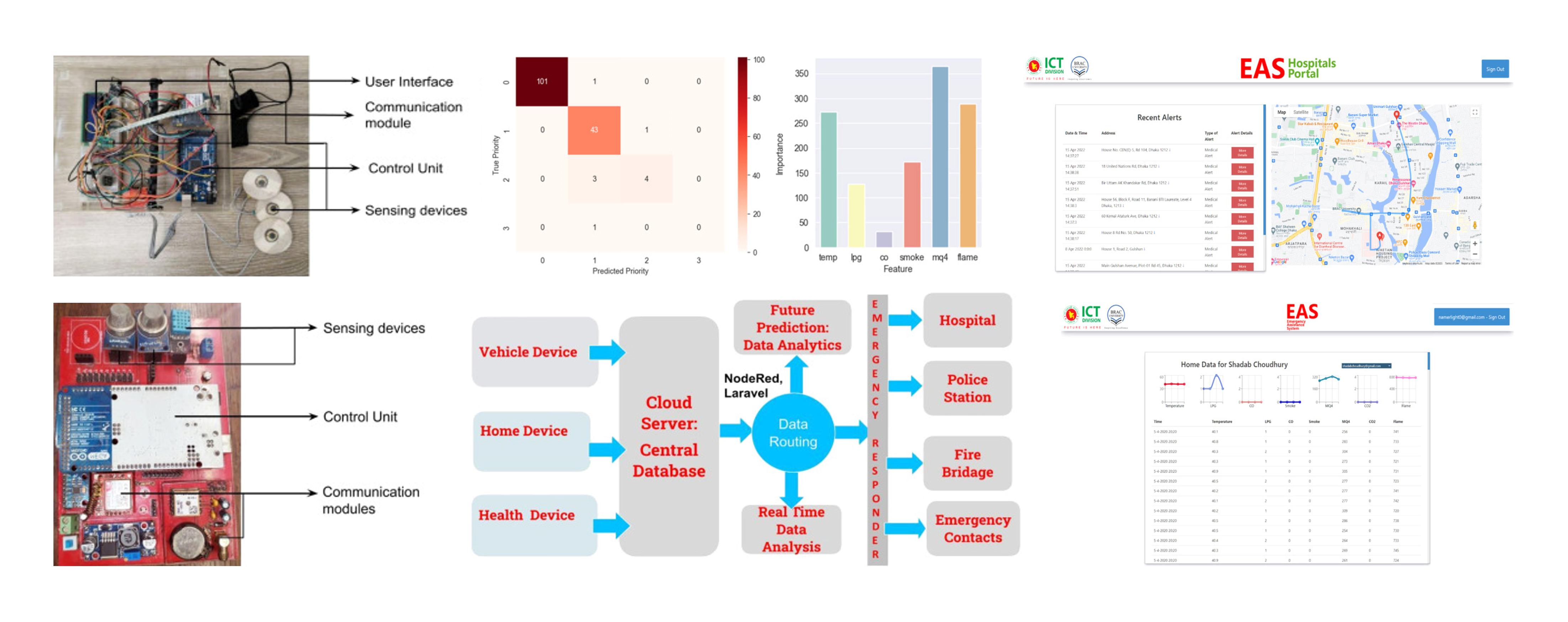
Paper Links
Full Paper (Open-Access)
Abstract
Effective and timely resource deployment is essential during emergencies. By integrating machine learning (ML) and the Internet of Things (IoT), automatic priority analysis of emergency response systems could revolutionise this vital process, save life and minimize damages. This paper presents a comprehensive framework for deploying an IoT, and ML-driven emergency response system (ERS), which uses real-time data analysis and predictive modelling to identify patterns and prioritise responses based on their expected impact, urgency, distance and available resources. The system is designed to process and analyze diverse data streams from multiple sources, such as IoT sensors, enabling rapid and informed responses to emergencies prioritizing emergency responder (Police, fire brigade, hospital or emergency contacts etc.). The XGBoost model was utilised to prioritise the emergencies, and its performance was examined using accuracy, precision, average recall, and average F-1 score. Additionally, a web dashboard was deployed to visualise sensor and projected data in real-time, guaranteeing accessibility and scalability. This allowed users to engage with the system through an intuitive interface and obtain timely alerts and insights. The system provides dynamic visualisation and real-time tracking of emergency scenarios through the integration of geographical information systems (GIS) and the utilisation of cloud computing resources. This framework not only improves immediate response capabilities but also aids in strategic planning by providing actionable insights into potential future events. The deployment of such an ERS marks a significant step towards smarter, data-driven emergency management, enhancing safety and preparedness at both community and organizational levels. This innovative integration of IoT and ML has the potential to transform emergency response systems, optimizing resource allocation, reducing response times, and ultimately saving more lives in critical situations.
Credits
Dr. Abu S. M. Mohsin 1 2, Shadab Hafiz Choudhury 1, Munyem Ahammad Muyeed 1
1: Department of Electrical and Electronic Engineering, Brac University
2: Corresponding Author
Citation
@article{mohsin_automatic_2025,
title = {Automatic priority analysis of emergency response systems using internet of things ({IoT}) and machine learning ({ML})},
volume = {19},
issn = {2666-691X},
url = {https://www.sciencedirect.com/science/article/pii/S2666691X25000041},
doi = {10.1016/j.treng.2025.100304},
urldate = {2025-01-20},
journal = {Transportation Engineering},
author = {Mohsin, Abu S. M. and Choudhury, Shadab Hafiz and Muyeed, Munyem Ahammad},
month = mar,
year = {2025},
keywords = {Accident detection, Data visualization, Emergency response system (ERS), Internet of things (IoT) and machine learning, Priority analysis},
pages = {100304},
}